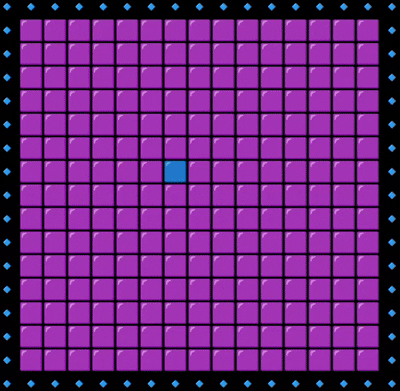How to Build a Graphical Minesweeper Game in the Python Terminal.
This guide explains how to build the Minesweeper game in the Python terminal. We’ll break down the code step by step—from importing modules and defining helper functions to creating the main classes and implementing the game loop. Finally, you’ll learn how to run the game in your terminal. This program is built for the Python terminal environment using only Python’s standard libraries. It does not depend on any external libraries and is compatible with Python 3.10 and above. For the complete code, please visit the “oyna” project and then go to the “Minesweeper” section to view the code. Feel free to contribute to its improvement and development. 1. Importing Modules and Helper Function The code begins by importing required modules and defining a helper function to capture a single character from user input. This function works across different operating systems. import itertools import random import typing from enum import Enum def getch() -> str: """Gets a single character""" try: import msvcrt return str(msvcrt.getch().decode("utf-8")) # type: ignore except ImportError: import sys import termios import tty fd = sys.stdin.fileno() oldsettings = termios.tcgetattr(fd) try: tty.setraw(fd) ch = sys.stdin.read(1) finally: termios.tcsetattr(fd, termios.TCSADRAIN, oldsettings) return ch Imports: itertools and random for processing iterators and generating random values. typing to support type hints. Enum from the enum module is used to define various states and actions. getch Function: Captures a single character without waiting for the Enter key. Uses msvcrt on Windows and termios/tty on Unix-like systems. 2. Defining States and Actions Two enums are defined to manage cell states and user actions. class State(Enum): BLOCK = "

This guide explains how to build the Minesweeper game in the Python terminal. We’ll break down the code step by step—from importing modules and defining helper functions to creating the main classes and implementing the game loop. Finally, you’ll learn how to run the game in your terminal.
This program is built for the Python terminal environment using only Python’s standard libraries. It does not depend on any external libraries and is compatible with Python 3.10 and above.
For the complete code, please visit the “oyna” project and then go to the “Minesweeper” section to view the code. Feel free to contribute to its improvement and development.
1. Importing Modules and Helper Function
The code begins by importing required modules and defining a helper function to capture a single character from user input. This function works across different operating systems.
import itertools
import random
import typing
from enum import Enum
def getch() -> str:
"""Gets a single character"""
try:
import msvcrt
return str(msvcrt.getch().decode("utf-8")) # type: ignore
except ImportError:
import sys
import termios
import tty
fd = sys.stdin.fileno()
oldsettings = termios.tcgetattr(fd)
try:
tty.setraw(fd)
ch = sys.stdin.read(1)
finally:
termios.tcsetattr(fd, termios.TCSADRAIN, oldsettings)
return ch
Imports:
-
itertoolsandrandomfor processing iterators and generating random values. -
typingto support type hints. -
Enumfrom theenummodule is used to define various states and actions.
getch Function:
Captures a single character without waiting for the Enter key.
Uses msvcrt on Windows and termios/tty on Unix-like systems.
2. Defining States and Actions
Two enums are defined to manage cell states and user actions.
class State(Enum):
BLOCK = " 








































































































































































![[The AI Show Episode 142]: ChatGPT’s New Image Generator, Studio Ghibli Craze and Backlash, Gemini 2.5, OpenAI Academy, 4o Updates, Vibe Marketing & xAI Acquires X](https://www.marketingaiinstitute.com/hubfs/ep%20142%20cover.png)



























































































































![[FREE EBOOKS] The Kubernetes Bible, The Ultimate Linux Shell Scripting Guide & Four More Best Selling Titles](https://www.javacodegeeks.com/wp-content/uploads/2012/12/jcg-logo.jpg)



![From drop-out to software architect with Jason Lengstorf [Podcast #167]](https://cdn.hashnode.com/res/hashnode/image/upload/v1743796461357/f3d19cd7-e6f5-4d7c-8bfc-eb974bc8da68.png?#)






































































































.png?#)




.jpg?#)
































_Christophe_Coat_Alamy.jpg?#)








































































































![Rapidus in Talks With Apple as It Accelerates Toward 2nm Chip Production [Report]](https://www.iclarified.com/images/news/96937/96937/96937-640.jpg)








































































































































